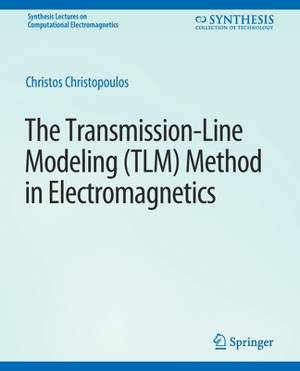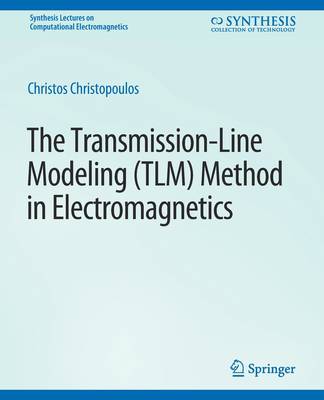
Door een staking bij bpost kan je online bestelling op dit moment iets langer onderweg zijn dan voorzien. Dringend iets nodig? Onze winkels ontvangen jou met open armen!
- Afhalen na 1 uur in een winkel met voorraad
- Gratis thuislevering in België vanaf € 30
- Ruim aanbod met 7 miljoen producten
Door een staking bij bpost kan je online bestelling op dit moment iets langer onderweg zijn dan voorzien. Dringend iets nodig? Onze winkels ontvangen jou met open armen!
- Afhalen na 1 uur in een winkel met voorraad
- Gratis thuislevering in België vanaf € 30
- Ruim aanbod met 7 miljoen producten
Zoeken
The Transmission-Line Modeling (Tlm) Method in Electromagnetics
Christos Christopoulos
€ 34,95
+ 69 punten
Uitvoering
Omschrijving
This book presents the topic in electromagnetics known as Transmission-Line Modeling or Matrix method-TLM. While it is written for engineering students at graduate and advanced undergraduate levels, it is also highly suitable for specialists in computational electromagnetics working in industry, who wish to become familiar with the topic. The main method of implementation of TLM is via the time-domain differential equations, however, this can also be via the frequency-domain differential equations. The emphasis in this book is on the time-domain TLM. Physical concepts are emphasized here before embarking onto mathematical development in order to provide simple, straightforward suggestions for the development of models that can then be readily programmed for further computations. Sections with strong mathematical flavors have been included where there are clear methodological advantages forming the basis for developing practical modeling tools. The book can be read at different depths depending on the background of the reader, and can be consulted as and when the need arises.
Specificaties
Betrokkenen
- Auteur(s):
- Uitgeverij:
Inhoud
- Aantal bladzijden:
- 123
- Taal:
- Engels
- Reeks:
Eigenschappen
- Productcode (EAN):
- 9783031005633
- Verschijningsdatum:
- 31/12/2007
- Uitvoering:
- Paperback
- Formaat:
- Trade paperback (VS)
- Afmetingen:
- 190 mm x 235 mm
- Gewicht:
- 240 g

Alleen bij Standaard Boekhandel
+ 69 punten op je klantenkaart van Standaard Boekhandel
Beoordelingen
We publiceren alleen reviews die voldoen aan de voorwaarden voor reviews. Bekijk onze voorwaarden voor reviews.











